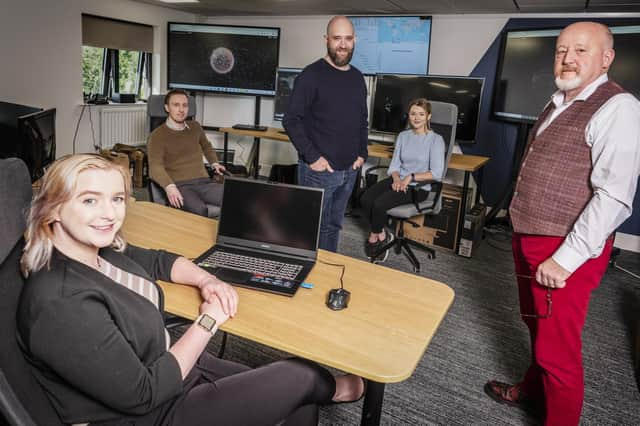Space company teams up with Kielder Observatory to tackle the growing problem of space debris


Alnwick-based Northern Space and Security Limited (NORSS), a space situational awareness and space surveillance and tracking company, has taken advantage of the dark skies around Kielder Observatory, to site its Low Earth Orbit (LEO) Optical Camera Installation (LOCI).
Four cameras will track active satellites and space debris, such as defunct rocket bodies at the observatory, which is set in the Kielder Water and Forest Park, in Northumberland. Three will capture images of satellites in Low Earth orbit below 2,000km in altitude and one will track objects in deep space, out to approximately 36,000km.
Advertisement
Hide AdAdvertisement
Hide AdThe cameras will feed the data back to the NORSS Orbital Analyst HIVE at Aykley Heads Business Centre, in Durham, and to its office at NETPark (North East Technology Park) in Sedgefield.
The data will be analysed to identify, track and monitor the behaviour of objects in space and to evaluate any potential collisions between satellites.
Ralph ‘Dinz’ Dinsley, executive director of NORSS, a retired RAF officer with more than 32 years’ military service as an aerospace battle manager, said space debris is a “growing problem”.
“The UK is not an ideal location for optical systems, such as LOCI, but Kielder Observatory is superb as there is so little light pollution.
Advertisement
Hide AdAdvertisement
Hide Ad“Space debris is a growing problem and one that everyone involved in space operations from satellite regulators to those who operate them need to address.
“In the past, space debris has been the primary cause of possible collisions in orbit and the sustainability of space is NORSS’s mission.”
Catherine Johns, CEO, of Kielder Observatory, said: “Space debris, such as redundant satellites, is a huge problem and there is no real idea as to the scale of the issue because there aren’t that many people with the technology to capture images of it.
"Even something the size of a grain of sand could do a great deal of damage up there.
Advertisement
Hide AdAdvertisement
Hide Ad“Having this technology at Kielder is an educational asset as we really want people to think about the space environment in the same way we talk about light pollution.
“We’re often asked about whether the number of satellites is bad for the night sky, and it does affect what we can see, but by capturing these images, it can act as a conversation starter between the astronomy community and the satellite industry.”